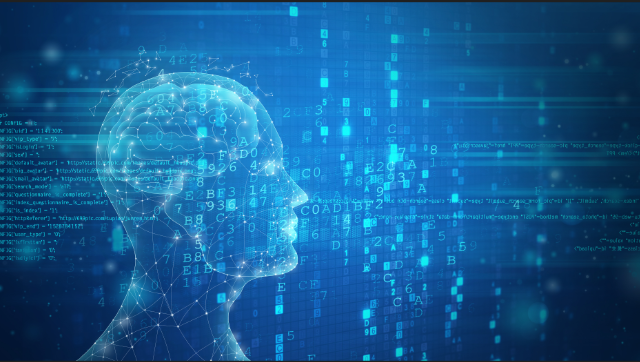

Today, computer vision (CV) technology is at an inflection point, with major trends converging to make cloud technology ubiquitous in tiny edge AI devices optimized for specific uses. And are usually battery powered.
Technological advancements address specific challenges that enable these devices to perform complex functions locally in constrained environments—namely size, power, and memory—enabling this cloud-centric AI technology Able to scale to the edge, new developments will make AI vision at the edge ubiquitous.
CV technology is truly at the cutting edge and is enabling a higher level of Human Machine Interface (HMI).
Context-aware devices are aware not only of the user, but also of the environment in which they operate, all in order to make better decisions and enable more useful automated interactions.
For example, a laptop can visually sense when a user is paying attention and can adjust its behavior and power policy accordingly. This is useful for power saving (turning off the device when no user is detected) and security (detecting unauthorized users or unwanted "lurkers"), and provides a smoother user experience. In fact, by tracking the eyeballs of bystanders (bystander detection), the technology can further alert users and hide screen content until it is safe to do so.
Another example: a smart TV can sense if someone is watching, and it will adjust the picture quality and sound accordingly. It can automatically shut down when no one is around to save power. Air conditioning systems optimize power and airflow based on room occupancy to save energy costs.
These and other examples of smart energy utilization in buildings become even more financially important through the home-office hybrid work model.
This technology is not limited to televisions and PCs, but also plays a vital role in manufacturing and other industrial uses, such as objects used for security supervision (i.e. restricted areas, safe passages, protective equipment enforcement) Inspection, predictive maintenance and manufacturing process control. Agriculture is another sector that will greatly benefit from vision-based situational awareness technologies: such as crop inspection and quality monitoring.
Advances in deep learning have made many amazing things possible in the field of computer vision. Many people don’t even know how they use computer vision technology in their daily lives. For example:
Image Classification and Object Detection: Object detection combines classification and localization to identify objects in an image or video and specify their location in the image. It applies classification to different objects and uses bounding boxes. CV works through mobile phones and can be used to identify objects in images or videos.
Banking: CV is used in areas such as fraud control, identity verification, data extraction, and more to enhance customer experience, improve security, and improve operational efficiency.
Retail: The development of computer vision systems for processing this data is making digital transformation of real-world industries, such as self-service checkout, easier to achieve.
Self-Driving Cars: Computer vision is used to detect and classify objects (such as road signs or traffic lights), create 3D maps or motion estimation, and plays a key role in making self-driving cars a reality.
The ubiquitous trend of edge vision processing based on machine learning is obvious. Hardware costs are falling, computing power is improving significantly, and new methods make it easier to train and deploy small-scale models that require less power and memory. All of this reduces barriers to adoption and increases the use of AI at the edge of CV technology.
But even as we see micro-edge AI becoming more commonplace, there is still work to be done. To make ambient computing a reality, we need to serve long-tail use cases across many market segments, which can create scalability challenges.
In consumer products, factories, agriculture, retail and other fields, every new task requires a different algorithm and a unique data set to train on. Solution providers provide additional development tools and resources to create optimized machine learning-enabled systems that meet the requirements of specific use cases.
TinyML is a key enabler of enabling all types of AI at the edge. This is a way to develop lightweight and energy-efficient machine learning models directly on edge devices using compact model architectures and optimization algorithms.
TinyML enables AI processing to occur locally on the device, reducing the need for constant cloud connectivity. In addition to consuming less power, TinyML implementations can reduce latency, enhance privacy and security, and reduce bandwidth requirements.
Additionally, it enables edge devices to make real-time decisions without relying heavily on cloud infrastructure, making AI more accessible and useful in various applications such as smart devices, wearables, and industrial automation. practical. This helps address feature gaps and enables AI companies to upgrade software around their NPU products by developing rich model examples ("model zoos") and application reference code.
By doing so, they can provide a wider range of applications for the long tail, while ensuring design success by optimizing the right algorithms for the target hardware under defined cost, size and power constraints to solve specific business needs.
The above is the detailed content of What is computer vision (CV) technology?. For more information, please follow other related articles on the PHP Chinese website!
 Application of artificial intelligence in life
Application of artificial intelligence in life What is the basic concept of artificial intelligence
What is the basic concept of artificial intelligence What is web front end
What is web front end fil coin price today
fil coin price today What does c-side and b-side mean?
What does c-side and b-side mean? What is the basic concept of artificial intelligence
What is the basic concept of artificial intelligence A complete list of alter commands in Mysql
A complete list of alter commands in Mysql What to do if win8wifi connection is not available
What to do if win8wifi connection is not available



